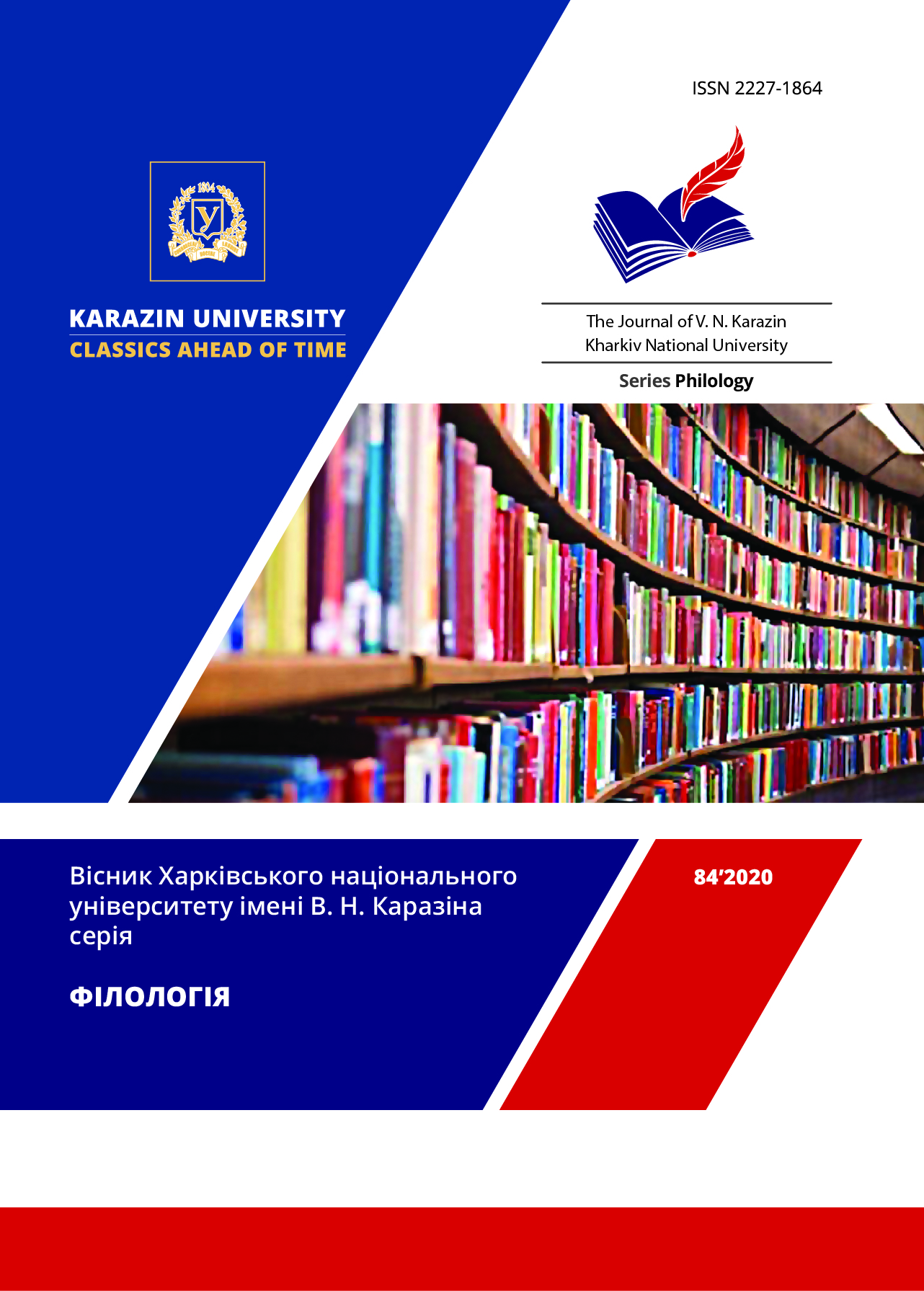Метафоризація в англомовному термінологічному полі «хвороби тварин» у лінгвокогнітивному аспекті
Анотація
У статті розглянуто когнітивні механізми застосування метафори в англомовної термінології ветеринарної медицини. Матеріалом дослідження стали терміни-метафори термінологічного поля «хвороби тварин». Ґрунтуючись на теорії концептуальної метафори, в рамках досліджуваного поля з’ясовано основні донорські зони, що послужили джерелом метафоричних номінацій на позначення хвороб тварин. Схарактеризовано типи метафоричних перенесень, наявних у термінологічному полі «хвороби тварин»: структурний, гештальтний, дифузний. Проаналізовано основні категорії метафоризації досліджуваного термінологічного поля. Робиться висновок про те, що процеси метафоризації продемонстрували надзвичайну активність в термінотворенні, ґрунтуючись на використанні знаків одних предметних сфер на позначення інших. Виявлено кількісне домінування гештальтного різновиду метафоризації.
Було встановлено, що найбільш продуктивною для утворення англійських термінів-метафор на позначення хвороб тварин є донорська зона ЛЮДИНА, оскільки людській свідомості властиво пізнавати зовнішній світ в тісному асоціативному зв'язку з особистим досвідом біологічного і соціального характеру. Продуктивною для англійських термінів термінологічного поля «хвороби тварин», є концептуальна сфера АРТЕФАКТ як рукотворний предмет. Актуальним для цієї донорської зони є гештальтний метафоричний різновид, що ґрунтується на використанні зорових та слухових гештальтів.
Для утворення термінів-метафор найбільш характерне використання зорових гештальтів на основі зовнішньої подібності симптомів хвороби тварин до рукотворних предметів, або у результаті їхніх асоціацій з забарвленням артефактів.
Концептуальна сфера НАТУРФАКТ як донорська зона для термінів на позначення хвороб тварин складає досить вагому частину метафоричних найменувань. У результаті проведеного дослідження було виявлено, що мотиваторами донорської зони НАТУРФАКТ є складники таких сфер, як флора, природні об’єкти, ландшафт, гірська порода та продукти природного походження. Найбільш продуктивним засобом при застосуванні знаків-натурфактів є гештальтування. Здебільшого метафори такого типу ґрунтуються на зіставленні ще не пойменованих хвороб тварин з уже відомим зоровим гештальтом.
Завантаження
Посилання
Lakoff, D., Dzhonson, M. (2008). Metafory, kotorymi my zhivom [Metaphors, We Live by] trans. from English. Ed. Baranova A.N. 2nd ed. Moscow: LKI Publishing House, 256 p. (In Russian).
Selivanova, O. O. (2010). Linhvistychna entsyklopediya [Linguistic Encyclopedia]. Poltava: Dovkillya. 844 p. (In Ukrainian).
Selivanova E. A. Kognitivnaya onomasiologia: [monograph] [Cognitive onomasiology] K. Fitosotsiotsentr, 2000. 248 p.
Orlov F. M. (ed.) Slovar' veterinarnikh klinicheskikh terminov. [Dictionary of veterinary clinical terms]. Moscow: Rosselkhozizdat, 2008. 367 p. (In Russian).
Nedosekov V. V., Polishchuk V. V. Slovnyk epizootolohichnykh terminiv [Dictionary of epizootic terms]. Kyiv: TOV “TSP KOMPRYNT”, 2014. 87 p. (In Ukrainian).
Kittay E. Lehrer A. Semantic field and the structure of metaphor. Studies in language. 1981. № 5. Р. 31–63.
Merriam-webster. Available at: https://www.merriam-webster.com/dictionary/elephantiasis#medicalDictionary.
Merriam-webster. Available at: https://www.merriam-webster.com/medical/clover%20disease.
Rudzka-Ostyn B. Topics in cognitive linguistics. Amsterdam : Benjamins, 1988. 704 p.




